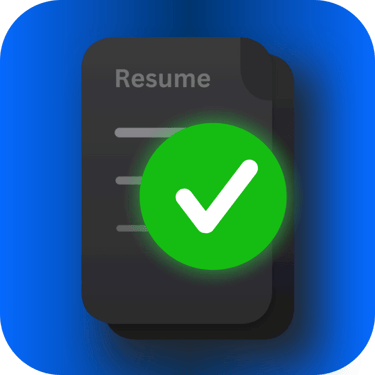The Paradox of Being "Too Good": How to Tailor a Resume When You're Overqualified
6/25/20253 min read
The average employee stays with a company for 4.1 years.
It’s one of the most baffling and frustrating pieces of feedback a job seeker can get: "You’re just... overqualified." You know you can do the job advertised—and do it brilliantly. You have years of experience, a mountain of skills, and a track record of success. So why are you being rejected for being too good?
The truth is, when a hiring manager sees a resume that is far more senior than the role, red flags go up. They aren't worried you can't do the job. They're worried about things you haven't even considered:
You'll get bored and leave in six months.
You'll demand a salary far above their budget.
You won't be happy taking direction from a less-experienced manager.
You're just using this as a placeholder until something better comes along.
Your resume's job, in this unique situation, is not to impress them with the full force of your experience. Its job is to reassure them. It needs to show that you are not just a temporary solution, but the perfect, long-term fit.
Step 1: Dial back your professional title & summary
This feels counterintuitive, but it's the most important first step. You need to align your resume with the scope of the role, not the scope of your entire career.
Adjust your headline: If your last role was "Vice President of Sales," but you're applying for a "Senior Account Manager" role, you can ethically adjust your headline at the top of your resume to "Senior Sales & Account Management Professional."
Reframe your summary: Your summary must speak directly to the job's needs, not your highest-level achievements.
Before (Overqualified): "A C-level executive with 20 years of experience transforming global operations and managing nine-figure P&Ls."
After (Tailored): "An experienced operations professional with a passion for process improvement and team leadership. Seeking to apply my skills in logistics and project management to help a mission-driven company streamline its supply chain."
Step 2: Prune your career history
You do not need to list every job you've had since the beginning of time. Your resume is a marketing document, not a legal affidavit.
Focus on the last 10-15 years: For most roles, this is more than enough to establish your credibility without overwhelming them.
Consolidate early roles: You can group very early or less relevant jobs into a single line: "Early career includes roles in customer service and junior administration."
Step 3: Reframe your accomplishments (focus on "doing," not "directing")
This is about strategic selection. Go through your impressive accomplishments and pick the ones that are relevant to the level of the job.
If you're a former marketing director applying for a "content strategist" role:
Don't say: "Architected the entire corporate marketing strategy and managed a $5M annual budget." (This is intimidating).
Do say: "Personally developed and executed a content strategy that increased organic blog traffic by 75%." (This shows you can still do the hands-on work).
Step 4: Use your cover letter to explain the "why"
Your resume shows you can do the job. Your cover letter is where you must proactively dismantle their fears. Be direct and honest.
Explain why you are interested in this specific role: Are you seeking a better work-life balance? Are you passionate about this company's mission? Do you want to return to more hands-on work and less management? Stating your motivation upfront can instantly put a hiring manager at ease.
The challenge: the art of strategic humility
This entire process feels unnatural. You've spent your whole career accumulating experience, and now you're being told to hide some of your biggest wins. It’s an act of "strategic humility" that requires you to check your ego at the door, which is incredibly difficult for any successful professional.
Your personal career calibrator
How do you know how much is too much? How do you decide what to cut and what to keep? It’s a delicate balancing act. The TailorMyResume iOS app can act as your objective calibrator.
Our app analyzes the job description and helps you identify the skills and responsibilities that are at the correct "altitude" for the role. It guides you in selecting the accomplishments from your vast history that are most relevant and least intimidating, helping you dial your resume back to the perfect level. It takes the emotional guesswork out of the process.
Stop letting your experience work against you. Start making it work for you.
Ready to craft a resume that opens the right doors? Download TailorMyResume from the App Store and position yourself perfectly for the role you want.


